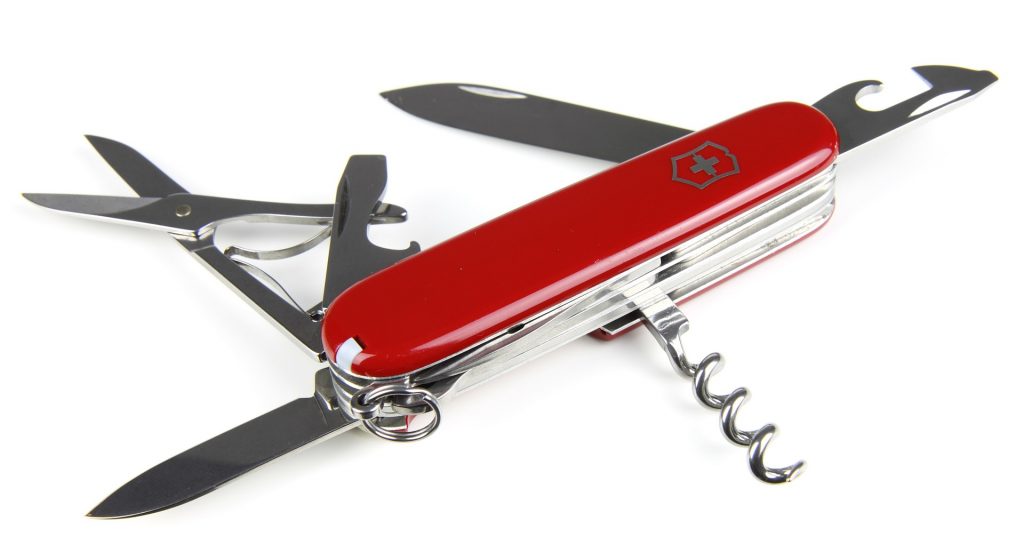Manufacturing Software Solution – Not a Swiss Army Knife
Choosing a software that does not suit your manufacturing company’s needs could cost you a lot – in time, money, and nerves.

Despite the fact that there has been a huge leap in the development of manufacturing software solutions in the last ten years, many of the old problems in the field remain actual today.
With a lot of service providers still bringing underdeveloped software onto the market, manufacturers need to know how to distinguish between a functioning system and a sleek, glitzy façade with a glitchy interior.
Not to say that a polished design is a bad thing.
Because it’s not.
But too often a shiny surface is used to mask an underdeveloped or an overloaded internal apparatus.
And that applies everywhere.
Although we live deep in the information age, people working in manufacturing are still often dissatisfied with their software.
This was confirmed by a study conducted by Redshift Research. Back then, most companies appreciated the importance of ERP/MRP software, but only 9% believed that their system was easy to use.
The cause of this dissatisfaction was natural and easily understandable.

Building up from accounting
When most manufacturing software solutions were being developed, they started with accounting. This makes sense as firms are in different fields, but accounting is needed everywhere.
Accounting practices, however, are very strict and require a large number of specific steps from the user, with small changes in data having the capability of ending up a nightmare.
The design of the systems made the needs of accountants their main priority. Then, these programs became overgrown with other functionality (e.g., inventory control, supply chain management, manufacturing management).
However, the basic framework of the software was already laid down and could barely be changed.
What companies were offered then were clunky ERPs with often an excellent accountancy department, but either an almost unmanageably complex or a deeply lacking production management system.
Moreover, because ERP systems were first introduced to accounting departments, sometimes the choice and implementation of the production part was entrusted to financial personnel. And that meant that production management capabilities were often overlooked in favor of finance.
This meant that the systems took forever to implement and cost a lot more in the end than what was promised on the initial price tag.
Obviously, many companies (even giants like Lidl and Haribo) have pulled out of their ERP implementation due to this.

Fast-forwarding to 2020…
To this day, dozens of manufacturing software solutions claim that they are suitable for production.
While this is technically true, in reality it is like using a pocket knife, even a good one, as the primary tool in the workplace.
It’s possible, and better than nothing, but no one would do it if they had seen another option – a full toolbox with instruments designed specifically for certain intricate tasks.
No business, especially not a manufacture, can make sacrifices in one department for the benefit of the other without causing long-run disruptions and loss in the whole organization.
It’s a bitter pill to swallow, but a huge majority of allegedly universally functional ERP and MRP systems are flawed and unbalanced.
And it’s a tough job to understand which of them deserve your business.

What is a good manufacturing software solution like?
First of all, good manufacturing software is made for manufacturers from the beginning, not by adding functionality to an already existing stack that services one department in a business.
Manufacturers have a certain set of indispensable needs that have to be met, and designing a proper MRP system should take place with these needs in mind.
So, when you are in the process of evaluating different software for your manufacture, try to find answers to these questions:
- Does the system address the needs of each department of a manufacturing company?
Good MRP software covers all aspects of a manufacturing business: supply chain, planning, production, sales, and finances. - Does the system cover the specifics of production management, planning, and reporting?
Good MRP software covers all aspects of manufacturing management: planning and scheduling, shop floor reporting, RMA. - Does the system ensure seamless interaction between departments?
Information should be exchanged without delay and with all adjustments reflecting in the user interface of the necessary departments. - Is the system easy to use for people without IT knowledge?
Onboarding should not take up so many resources that production is hindered. Everyone from shop floor to management should be able to use the software without needing to learn functions or formulas. - Is the system easy to maintain with no need for a designated IT department?
Cloud-based options require no on-premise maintenance other than keeping computers and portable devices used to operate the system updated. - Is the system cost effective?
Utilizing the MRP software should never eat up all the resources that it helps save. As a business manager, you should always look to get the most bang for your buck. - Is the system mobile and remotely accessible?
A great system is not worth much if it’s only accessible in an office and not on the production floor. Exchange of information should be instantaneous – so look for software that could be accessed everywhere via mobile apps.
If any of these questions come back with a ‘no’, everyone from the owners and production managers to factory floor workers are going to be unhappy in the long run.

Conclusion
Even though there is an array of different manufacturing software solutions to choose from, few of them can deliver on their promises of streamlining production, lowering costs, preventing human error, and bettering intra-organizational communication along with customer relations, all while being affordable and easy to use.
Because it’s a lot of work – and it’s a heck of a lot easier to hone the front-end than the back-end.
Proper manufacturing software should not only be designed taking a business’s operational needs into account, it should consider the specific requirements of each department separately while also seeing them as part of an integrated whole.
There are a lot of Swiss Army knives out there in the ERP/MRP business that will do the trick in a pinch, but if you want to seriously build your business, you’ll need a proper toolbox with which you can structure production in your manufacture in a way that accommodates the organization from top to bottom.



